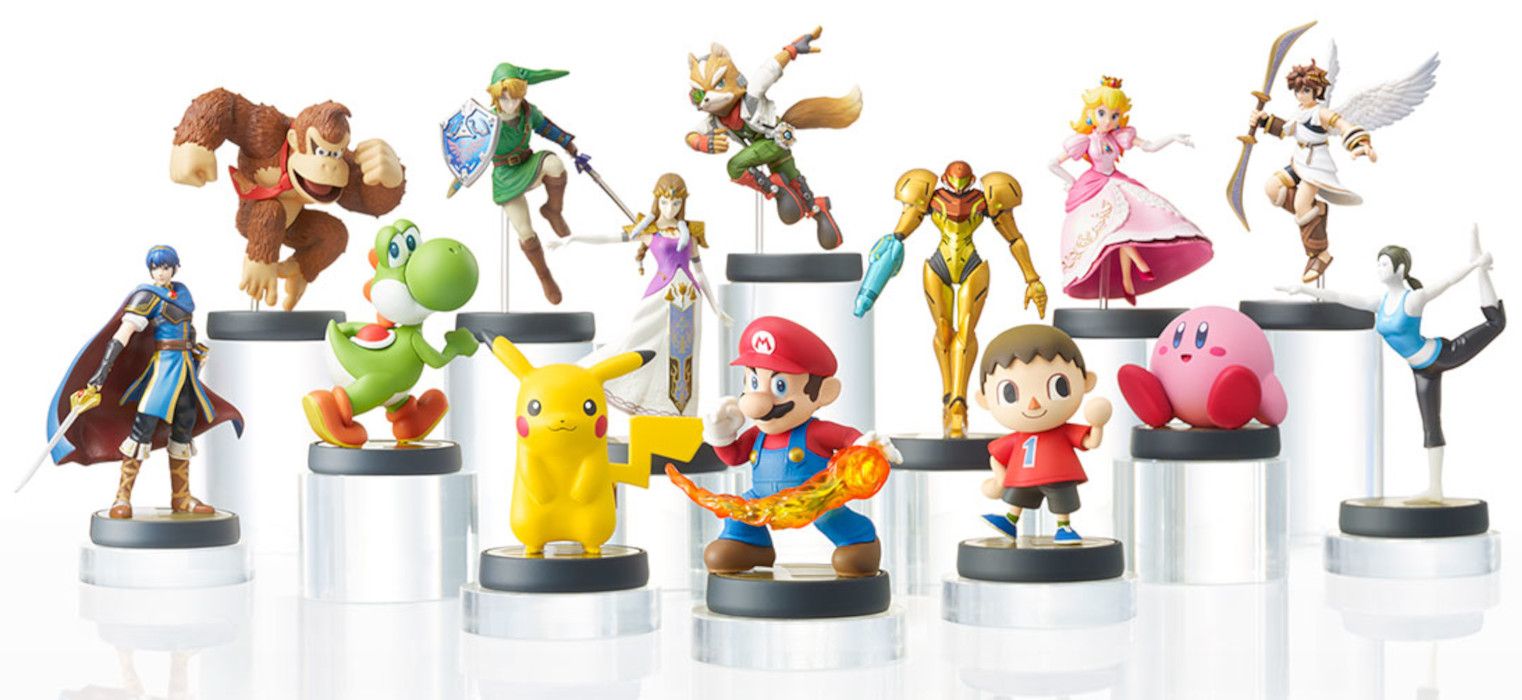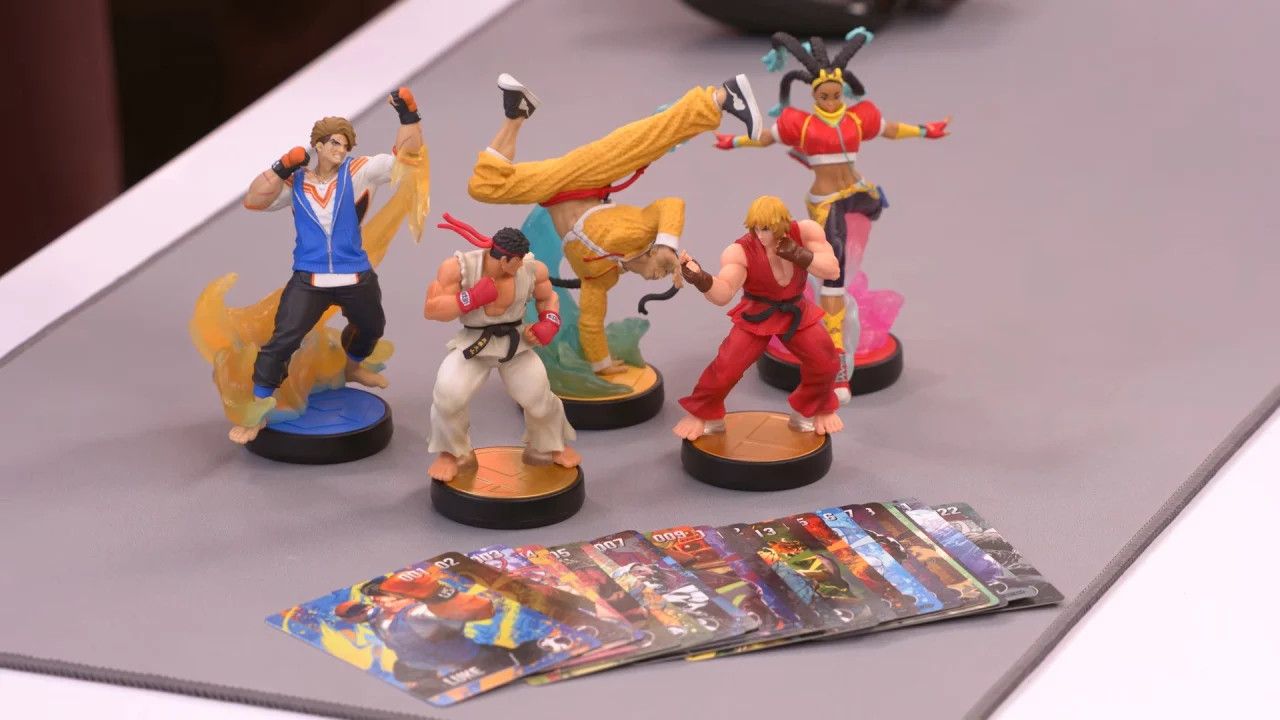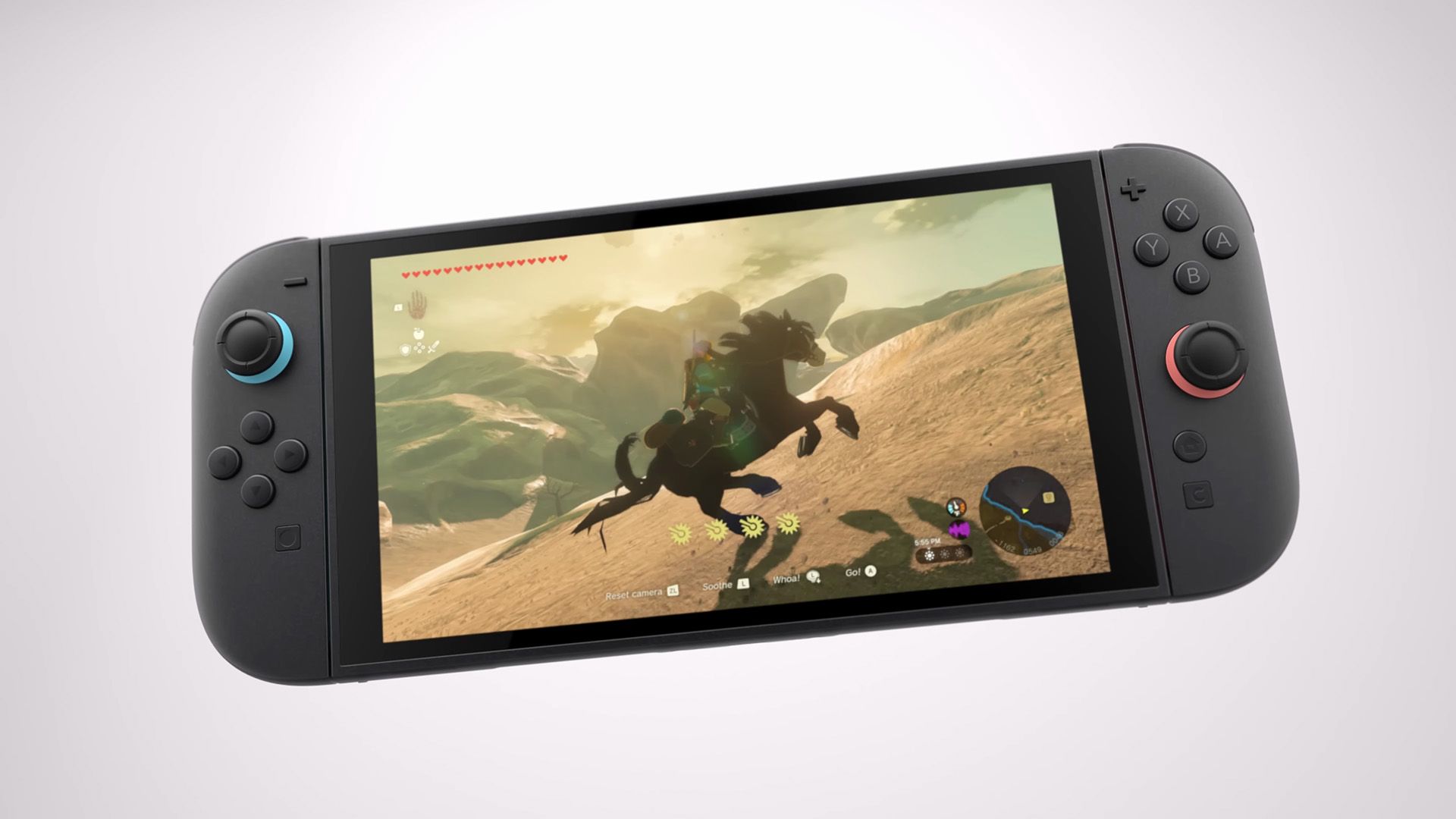Summary
- The Switch 2 may reintroduce toys-to-life games with its NFC reader.
- High costs and rapid releases killed toys-to-life games, but Switch 2 could revive the genre.
- Third-party developers can utilize the Switch 2’s hardware to bring creative new ideas into the toys-to-life genre.
When the Switch launched back in 2017, toys-to-life games were already on their way out, and even Nintendo’s Amiibo couldn’t save the dying genre. Toys-to-life games have largely been forgotten in recent years, but the upcoming Switch 2 could inspire a revival of this short-lived gaming trend.
Nintendo Has a History With Toys-to-Life Games
If you’re unfamiliar with the genre, “toys-to-life” games are designed around collectible figurines, which can be purchased separately and scanned with a near-field communication (NFC) reader to access content in the game. For most games, scanning a character figurine allows you to play as that character or unlock exclusive items.
It’s been almost a decade since the last major toys-to-life game was released, but they were a pretty big deal when they first debuted. After Skylanders: Spyro’s Adventure kickstarted the genre, other franchises hopped onto the trend with games like Lego Dimensions and Disney Infinity. Toys-to-life games span a variety of genres, but they all carry the same charm of seeing your toys be brought to life in virtual sandboxes and expansive campaigns.
It didn’t take long for Nintendo to capitalize on the toys-to-life craze, though not in the way that most people remember. Prior to its popular Amiibo—a line of NFC figures modeled after iconic Nintendo characters—it had already begun its push into the toys-to-life market with NFC toys created for Pokémon Rumble U. It wasn’t until 2014—when Amiibo debuted alongside the release of Super Smash Bros. 4—that Nintendo redefined the toys-to-life genre.
Whereas other toys-to-life series were primarily marketed as toys for younger audiences, Amiibo transformed toys-to-life figures into highly sought-after collectibles for all ages. That’s not to say other series went completely ignored by collectors, but the demand for Amiibo was unmatched among other toys-to-life lines. Beyond their collectible status, Amiibo also serve more functions, as they can be used for a variety of functions and unlocks across numerous different Nintendo games.
Even with most other toys-to-life series having been discontinued, Amiibo is still going strong. Since their initial release, Amiibo has expanded to include a mixture of fan favorites from niche classics, iconic characters from dozens of non-Nintendo series, and NFC cards representing the villagers from Animal Crossing. Most recently, new Amiibo based on Street Fighter 6 and The Legend of Zelda were announced for a release later this year.
However, the toys-to-life genre is effectively dead. Most of the genre’s largest franchises ended after only a few years, and even series that lasted through other mediums, such as Skylanders and Lightseekers, have since gone dormant. Recent Amiibo can hardly be considered toys-to-life, either, as they primarily serve as keys for unlocking in-game content rather than being a prominent game mechanic.
Even the early Amiibo made for Super Smash Bros. acted as AI-controlled fighters, which could be customized with a unique moveset and fighting style. Thankfully, the Switch 2 may be the first step towards a proper revival of the toys-to-life genre.
The Switch 2 Is Perfect for Toys-to-Life Games
Although not much has been said about it, the Switch 2’s NFC reader has been all but confirmed by Nintendo. As revealed earlier this year in filings with the Federal Communication Commission (FCC), the Switch 2 features an NFC reader within its right joystick—as was the case for the original Switch. This doesn’t come as much of a surprise, as the NFC reader was likely kept to ensure the Switch 2 would be backward compatible with classic Switch games, as well as retaining Amiibo support for next-gen titles.
The Switch 2’s inclusion of the NFC reader is still fascinating for another reason. Every prior Nintendo system that included an NFC reader was met with competition from other toys-to-life developers. Even the Nintendo Switch, which arrived late into the genre’s initial lifecycle, featured Skylanders: Imaginators as one of its launch titles. The Switch 2 will be the first new Nintendo console to be released after the demise of the toys-to-life genre, making its NFC reader seem almost like a relic in today’s gaming industry.
However, the Switch 2 boasts the same advantage that helped Nintendo’s Amiibo succeed where other toys-to-life franchises failed. Most toys-to-life games come with a hefty price of admission. Games like Skylanders and Lego Dimensions require you to purchase the game, its corresponding NFC reader, and at least a few figurines to get a complete experience. These essentials were usually bundled together in “starter packs,” but most of these bundles retailed for over $100 at release. Later toys-to-life games received extra accessories and expansions, adding even more to their cost.
Not only were toys-to-life games expensive, but they were also released at a rapid rate. Skylanders and Disney Infinity received new entries on an annual basis, with each new game launching alongside more figures and add-ons. Lego Dimensions had an even more hectic schedule, releasing new content packs every few months. Keeping up with the constant influx of add-ons and new releases was too expensive for anyone but the most die-hard collectors.
Amiibo aren’t cheap, either, but they avoid the mistakes that often plagued the toys-to-life genre. Most Wii U, Switch, and 3DS games don’t require Amiibo to access the majority of their content, and the few that do are limited to free apps—such as the Wii U’s Amiibo Tap: Nintendo’s Greatest Hits—or budget titles like Animal Crossing: Amiibo Festival and Mini Mario & Friends: Amiibo challenge. Most importantly, the controller’s built-in Amiibo scanner allows you to use the figures without needing to purchase a different NFC reader for each game.
Nintendo’s consoles have the perfect setup for toys-to-life games, but they’ve never used their figures to the same extent as series like Skylanders and Lego Dimensions. The Wii U and Switch wasted this opportunity, but the Switch 2 is another chance for Nintendo to properly revive the toys-to-life genre with more creative ideas.
How the Switch 2 Could Spark a Toys-to-Life Resurgence
The Switch 2’s NFC reader doesn’t have to be reserved for Amiibo. While the console would certainly benefit from games that find more creative uses for Nintendo’s first-party figures, there’s a lot more to gain by allowing other developers to take advantage of the hardware.
Most other toys-to-life series not only failed to sell because of their intimidating price point but were also quickly abandoned due to their high production costs. The combined budget needed to develop a game, toy line, and unique NFC reader was unsustainable, but this problem wouldn’t have existed if third-party developers were able to use the built-in NFC readers of Nintendo’s consoles.
If the Switch 2 is less restrictive with its NFC capabilities, we could see the return of older toys-to-life series or the start of brand-new ones. This wouldn’t just apply to figurines, but could also lead to the release of third-party cards. Imagine being able to play trading card games online by scanning physical cards with the NFC readers. They could also provide a more affordable alternative to collecting figurines.
This wouldn’t be the first time Nintendo has collaborated with third-party companies to create NFC figures. I’ve already mentioned the Amiibo created for non-Nintendo games, but Nintendo has also collaborated with some of its competitors in the past. The Wii U version of Skylanders: Super Chargers received Donkey Kong and Bowser figurines that functioned as both Skylanders figurines and Amiibo. Nintendo also partnered with Ubisoft to produce Star Fox-themed character and vehicle figures for the Switch version of Starlink: Battle for Atlas.
It’s also possible that Nintendo will continue expanding its Amiibo line-up to include more third-party series. Either way, the Switch 2 needs more support from both Nintendo and other developers to avoid letting the NFC reader—and the toys-to-life genre as a whole—go to waste.
Toys-To-Life Games Deserve a Second Chance
Even in their heyday, toys-to-life games were divisive among audiences. Fans loved the genre for its ability to combine the fun of physical toys and video games into one experience, but many others viewed it as an excuse for game companies to lock content behind overpriced gimmicks. While there’s some truth to both sides, the toys-to-life genre was brimming with untapped potential.
Skylanders used the medium to create an experience that made character progressions and customization feel personal. Every Skylander has its own branching upgrade paths and cosmetics, giving you the freedom to hand-pick their abilities and appearance. Your Skylander’s data is also saved onto the figure, meaning you can use the same figure to play as your favorite character across different Skylanders games and consoles.
However, a lack of innovation between entries and the limitations of their annual release schedule killed the Skylanders series before it could make better use of its unique approach to player expression.
Starlink: Battle for Atlas is a space-combat game that allows you to build your own spaceship by customizing a physical model of your ship with different parts and weapons. The parts you attach to the real-world model are reflected on your in-game ship, and these parts have different effects on your spacecraft’s stats and firepower.
You can also purchase figurines representing different pilots, each of whom possesses a special ability that can be activated during combat. Unfortunately, Starlink (the game, not the satellite network) was released a few years after the excitement around toys-to-life games had already begun to wane, resulting in the game’s disappointing sales and short-lived support.
Toys-to-life games tried to push gaming into a bold new direction with their colorful collectibles, but the unfortunate combination of high prices and an over-saturated market led the genre to an early demise. Many of the best toys-to-life games never had a chance to build upon their ideas, and the few series that did find success often overwhelmed players with a deluge of new releases.
These problems led to players quickly becoming tired of the genre. If the Switch 2 can successfully revive toys-to-life games, its developers will need to be wary of the mistakes that sank the genre once before.
Whether toys-to-life games will ever come back remains to be seen, but there’s no better platform for a revival than the Switch 2. Now that the fatigue against toys-to-life games has settled down, the genre finally has a chance at making a comeback.









